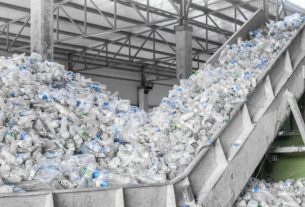David Alejandro Sánchez-Núñez, J. Alexandra Rodríguez-Rodríguez and José Ernesto Mancera Pineda talk us through Journal of Applied Ecology’s December’s Editor’s Choice research article. This study demonstrates that climate-smart restoration in mangroves should implement the types of hydrological rehabilitation measures that offset or avoid reinforcing ENSO strong phases.
History of cover fluctuations in a strategic mangrove ecosystem
The Ciénaga Grande de Santa Marta (CGSM), one of the most productive tropical coastal lagoon systems, is home to 519 animal species and around 3000 fishermen depend on their ecosystem services. The CGSM accumulated 27,380-ha of mangrove loss in 1995 from the 51,150-ha present in 1956. The construction of roads and dykes increased soil salinity in the system by reducing tidal and freshwater connectivity.
Soil salinity is a main regulator of mangrove plants. Although mangroves are salt tolerant, the higher the salinity, the higher the energy involved in water uptake and the lower the mangrove growth. Soil salinity reached 80-170 g L-1 in some sites during the dieback.
Between 1996-1998, CGSM was declared a RAMSAR site, and in 2000 an international Biosphere Reserve. During the 90s a rehabilitation project was implemented to increase freshwater connectivity by constructing diversions that reconnect the Magdalena River, the main freshwater source, with its former delta.
High sediment load from the Magdalena River, 10 times higher compared to pre-Anthropocene estimations, reduces hydrologic connectivity in constructed channels by clogging from sedimentation. Therefore, channel maintenance has been performed periodically since 2004. Despite such efforts, mangrove cover has fluctuated.
In 2017, the CGSM was included in the Montreux record (RAMSAR wetlands in critical danger) owing to a new mangrove dieback associated with a severe drought (strong and very strong El Niño event of 2015-2016) together with land and freshwater flows reclamations for livestock and agriculture.
Why study the Ciénaga Grande de Santa Marta?
After decades of observations, we witnessed quick mangrove recovery during La Niña episodes and mangrove degradation during strong El Niño events. We suspected climate variability and different types of hydrological rehabilitation were driving mangrove trajectories.
The long-term history of disturbances, restoration attempts, and a multidecadal monitoring of mangrove responses make the CGSM a valuable study model to evaluate the success of different hydrological restoration measures in the context of climate variability influence. Therefore, we gathered several long-term data sets and carried out analyses to find the contribution of climate variability and rehabilitation types on mangrove trajectories.

Mangroves climbing mountains and the role of regulator interactions
We found climatic variability drives mangrove trajectories by affecting soil salinity and how fast soil salinity changes. The rate at which soil salinity changes may be, for mangroves, like figuratively climbing or going down mountains with different slopes because of the different energetic implications. We found El Niño climate variability controls the rates of change of salinity in basin mangroves, which in turn control tree recruitment and landscape cover changes.
Soil salinity is usually monitored in mangroves, but this is not the case for other variables that also reflect climate variability effects. Our findings show the importance of estimating how fast salinity changes as it drives mangrove expansion and diebacks in inland sites.
Moreover, measuring changes in salinity is key to monitoring mangrove responses to regulators interactions. Very high mangrove seedling growth rates occurred during fast salinity drop rates and unvegetated conditions generated tree recruitment in a few years. In comparison, during shaded conditions, seedlings grew faster during low salinity but there was not a later transition into trees.
Hydrological rehabilitation: Freshwater vs. sediment flow
The type of hydrological rehabilitation in freshwater sources with high sediment load was key to promote or limit mangrove restoration. We found that rehabilitation measures which properly manage dredged sediments had more noticeable effects on mangrove recovery. However, future rehabilitation measures should manage a balance between water and sediment flows.
Climate variability in favour or against hydrological rehabilitation?
Our study shows that moderate climate variability events generate slight fluctuations in mangrove cover, but very strong climate variability anomalies generated strong episodes of mangrove recovery and dieback in basin (inland) mangroves. Historically, the planning of mangroves and other ecosystems restoration has paid little attention to climatic variability. However, we found that climatic variability can hamper restoration efforts and affect goal achievement.

This is even more relevant in the current changing climate. Hence, ecologically climate-smart restoration becomes highly relevant. For instance, if hydrological rehabilitation is carried out during high precipitation anomalies, it can favour the proliferation of macrophytes that limit mangrove development. Conversely, hydrological rehabilitation during droughts can counteract their negative effects.
Read the full article “Effects of climate variability and hydrological rehabilitation measures on long-term mangrove trajectories: From reproduction to recruitment and landscape cover changes” in Journal of Applied Ecology




